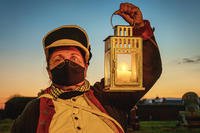
By Max Allan Collins
Editor's Note: COMPLEX 90 was an unfinished Mike Hammer novel by Mickey Spillane that was recently completed by noted author Max Allan Collins, whom Spillane asked to finish the book before is death in 2006. In the just-released book, Hammer travels to Russia on a fact-finding mission and gets entangled in an espionage incident with the KGB. Since the novel was originally inspired by the '60s spy craze, Collins decided to reflect on the influence of James Bond for us.
The recent publication of COMPLEX 90 got me reflecting on that special time in the ‘60s when James Bond first exploded onto the American scene. This is in part because I’m the lucky writer who completed Mickey Spillane’s unfinished 1964 manuscript of his “lost Mike Hammer Cold War thriller”; but also because I was in high school when Bond and the Beatles led the British Invasion, and have warm, vivid memories of the spy craze.

That a fictional spy would become so famous is mildly ironic, more so considering that Bond is famous in the books, as well. Basically, he’s the best known secret agent in the world, which might indicate he’s terrible at secrecy. Of course, Sterling Archer on the current FX series has the same problem (and a 21st Century parody like ARCHER indicates how the ripples of that mid-20th Century spy craze continue to be felt).
%embed1%
Kiss Me Deadly (trailer)
Prior to James Bond, Mike Hammer was the go-to macho guy in action/adventure fiction. He’d made a splash in the movies (notably Kiss Me Deadly, 1955) and on television (Mickey Spillane’s Mike Hammer, 1958-‘60) with Darren McGavin as Hammer – Stacy Keach would come later, in the ‘80s. Hammer was, of course, a private eye, but memorably took on KGB agents in One Lonely Night. Hammer’s popularity led to the TV show Peter Gunn, which smoothed the Spillane-style hero into a more sophisticated, jazz-loving PI, launching a wave of similar shows. The cool, suave Gunn makes the transition from roughneck Hammer to debonair Bond an easier one.
Spillane unwittingly helped Ian Fleming and his famous spy make their mark. Taking a ten-year hiatus starting in 1952, Mike Hammer’s daddy left a void that his paperback publisher, New American Library, scrambled to fill. Fleming was doing well in the UK, though he had flopped at two paperback houses in the USA. Seeking a Mike Hammer replacement, NAL put Spillane-style covers on Fleming’s novels, and blurbs bragging him up as “the British Mickey Spillane.” Finally Fleming got a foothold. Then JFK mentioned to a Life magazine reporter that his favorite recent book was From Russia With Love, and the rest is history.
%embed2%
The Girl Hunters (full movie)
Spillane eventually created his own counterspy, Tiger Mann, but Fleming was already the king of espionage. Mike Hammer, however, scored well against Russian agents in The Girl Hunters, Survival...Zero!, and of course the posthumous Complex 90. Mickey even played Mike Hammer in the film version of The Girl Hunters (1963), whose limited box office success was largely due to an ad campaign that played up the female lead, Shirley Easton, as “James Bond’s Golden Girl from Goldfinger.”
The early Fleming novels, in particular From Russia With Love, play a fairly straight espionage game. But as the novels progress, the familiar format of the films emerges in super-villains like Goldfinger, Dr. No and Ernst Stavro Blofeld. Though he had been an intelligence agent himself, Fleming was influenced more by adventure novels featuring such characters as Bulldog Drummond (the Mike Hammer of his day) and the Saint (who would be played on TV by none other than a pre-Bond Roger Moore).
Consider the highly stylized Bond films – Connery’s ruthless yet sophisticated spy, the wonderfully over-the-top production designs of Ken Adam, the witty, violent screenplays of Richard Maibaum, the distinctive direction of Terence Young and Guy Hamilton, and the romantic, sweeping scores of John Barry. What you have is a happy accident of a unique mix that was extremely hard to imitate.
%embed3%
Our Man Flint (trailer)
That did not stop other filmmakers from trying. Usually an element of parody came in, as in the two Derek Flint films (Our Man Flint, 1966, and In Like Flint, 1967) starring the wryly self-confident James Coburn. The Matt Helm movies (starting with The Silencers 1966), from terrific tough novels by Donald Hamilton that combined Fleming and Spillane, were overt parodies that all but ignored their serious source and allowed Dean Martin to do his Rat Pack thing in an era that was increasingly finding that passe. Produced outside of the official film series, the first Casino Royale film (1967 – a TV version preceded it) was played strictly, and unsuccessfully, for laughs.
%embed4%
The Ipcress File (trailer)
The most effective film offshoots of Bond were those that attempted a more serious, non-Fleming approach. Harry Saltzman (who, with Albert Broccoli, produced the Bond films) bought the rights to a series of straight spy novels by Len Deighton, featuring a nameless agent who became Harry Palmer on screen. The slightly shady, bespectacled Palmer is the role that made Michael Caine a star, and the first film is a minor masterpiece, The Ipcress File (1965), followed by two interesting entries, Funeral in Berlin (1966) and The Billion Dollar Brain (1967 – two minor Palmer films with Caine followed decades later).
%embed5%
The Spy Who Came in From the Cold (trailer)
Fleming’s success paved the way for film versions of John Le Carre, the greatest of serious espionage novelists, with Richard Burton starring in The Spy Who Came in From The Cold (1965). Le Carre’s work has been film frequently, with Tinker Tailor Soldier Spy (2011) a recent strong example.
%embed6%
The Man from U.N.C.L.E. (trailer)
Back in the ‘60s, TV was generally doing better imitating Bond. With a little help from Fleming, The Man from U.N.C.L.E. (1964-‘68) starring Robert Vaughn as Napolean Solo and David McCallum as Illya Kuryakin became wildly successful, with episodes expanded into movies for theatrical release. I Spy (1965-‘68) displayed an international flavor with the breakthrough casting of black comedian Bill Cosby as Alexander Scott opposite top-billed Robert Culp as Kelly Robinson, their constant quipping bringing humor to a fairly straight espionage format. Don Adams as Maxwell Smart in Get Smart (1965-'70) was more an U.N.C.L.E. spoof than a Bond one, running longer than its inspiration. The UK’s The Avengers (1961-‘69) with Patrick Macnee as John Steed and Diana Rigg as Mrs. Peel was smart, stylish, tongue-in-cheek fun (both actors would appear in Bond films).
%embed7%
OSS 117: Lost in Rio (trailer)
The enduring success of the Bond films, the second-longest-running film series (if you must know, the Bowery Boys is number one) has sparked numerous, sometimes wonderful parodies. The Austin Powers films gained a popularity second only to Bond himself. The French OSS 117: Cairo, Nest of Spies (2006) and OSS 117: Lost in Rio (2009) are ostensibly based on a long-running book series, but are specifically period-set parodies of the early Bond films, with Jean Durjardin (The Artist) spot on as a pseudo-Connery.
Little seen in the US, the OSS: 117 films are required viewing for all friends of James Bond.




